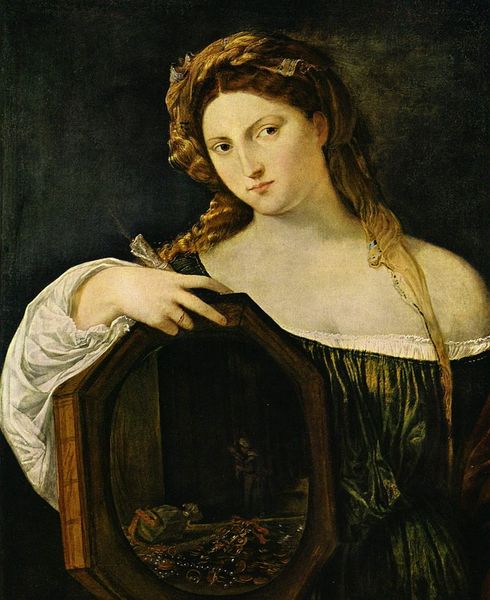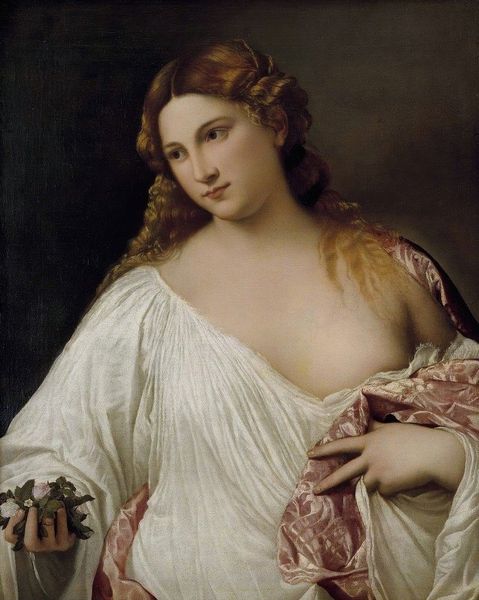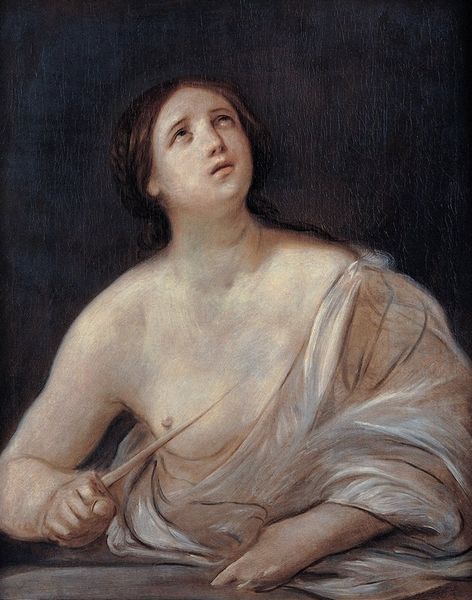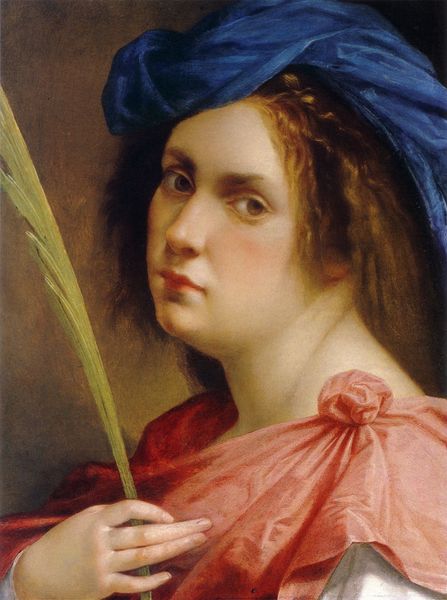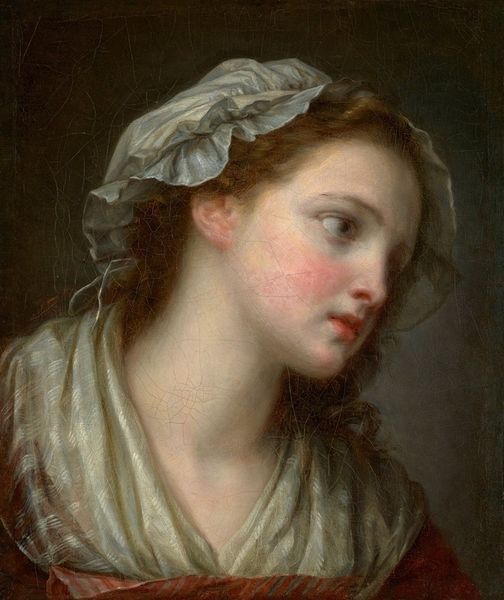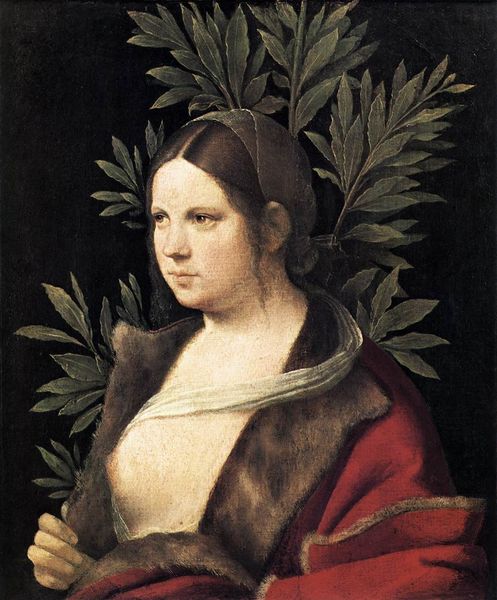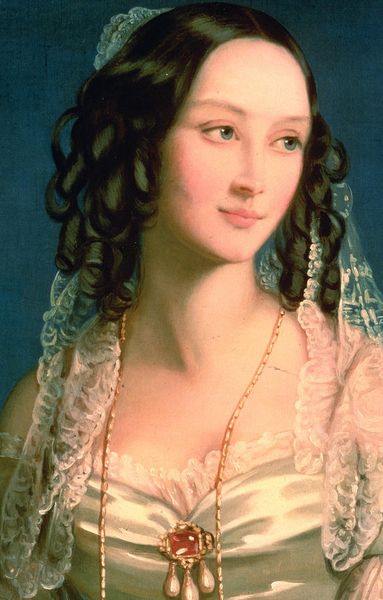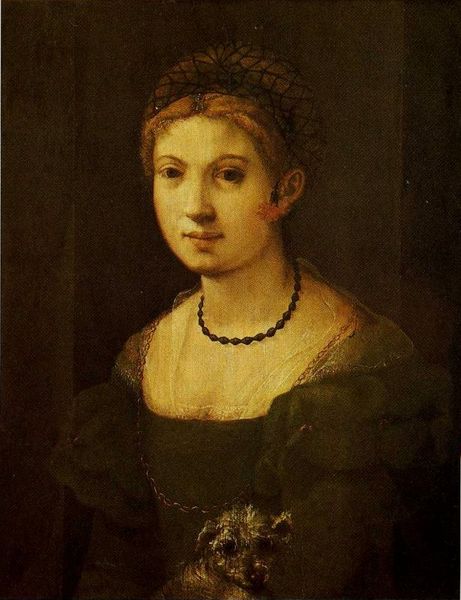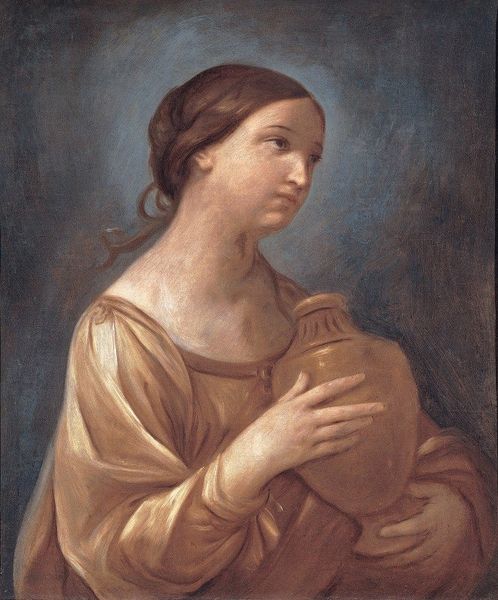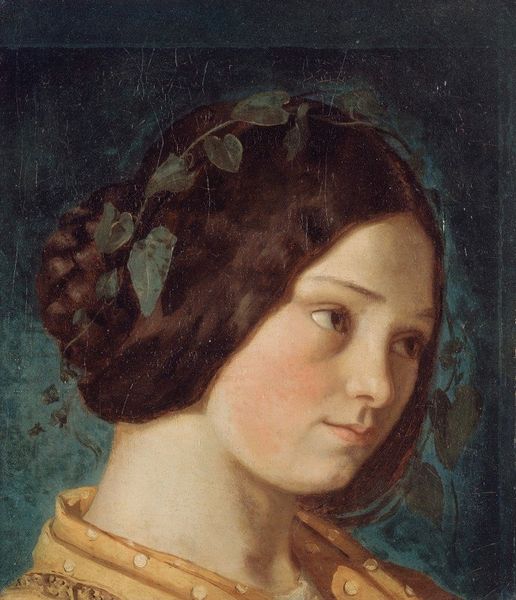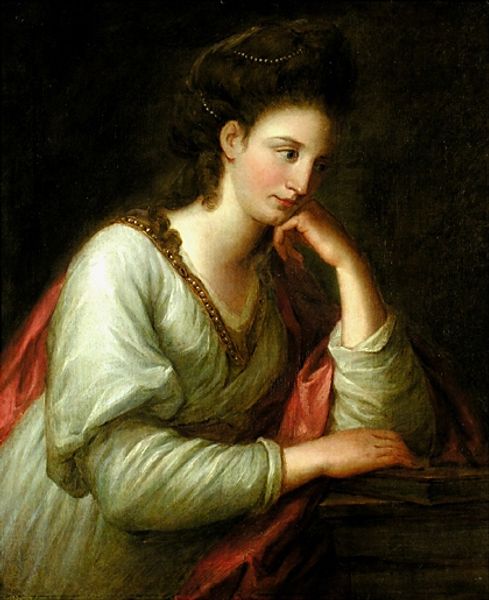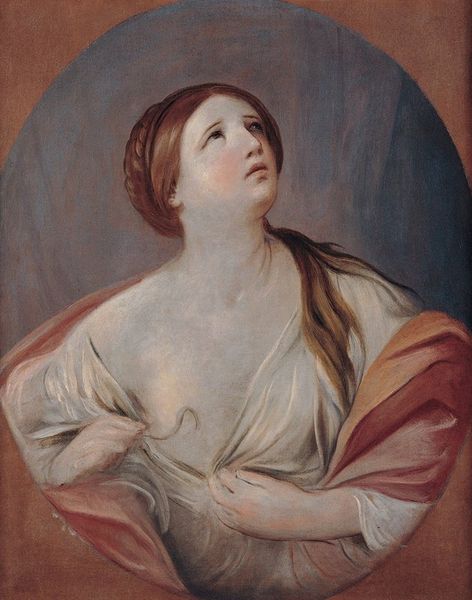
Dimensions: 62 x 81 cm
Copyright: Public domain
Curator: Today, we’re looking at "Girl with a Rose" by Guido Reni, an oil painting completed in 1631, currently held at the Museo del Prado. Editor: It has such a serene atmosphere, a thoughtful intimacy. I’m drawn to the subdued color palette, almost like a whisper. Curator: Indeed. Reni’s delicate handling of light and shadow—his sfumato—creates a sense of ethereal beauty. Consider the pyramidal composition, anchored by the girl’s gaze, and the rose delicately held in her fingers. Editor: Her downward gaze is interesting; there's an ambiguity here. What is she contemplating? Is it societal expectations of women at the time, holding and internalizing the rose’s bloom? Or is this another depiction of silent femininity—a signifier, perhaps, of passive roles and stifled dreams in Baroque-era culture? Curator: That’s one reading. I’m compelled by the simplicity and formal harmony: the balance between the texture of her skin and the smoothness of her gown. The single rose serves as an artistic element—its color echoes the flush in her cheeks, reinforcing a sense of restrained emotion. The cool color palette underscores the subtle classicism and ideal beauty. Editor: But, this work also comes from a time of shifting gender roles and power dynamics, particularly when so many women were silenced in arts or academia. Even as an idealized female figure, isn’t the girl here constrained by both the frame of the painting and those expectations outside it? Curator: While your points hold considerable social weight, the focus in Reni’s oeuvre seems directed toward rendering forms with near-sculptural precision, evoking emotion through refined brushwork and classic compositions. Look at the detail on the sleeve of her gown, it suggests both volume and depth and accentuates the luminosity that guides your eye through the work. Editor: I can’t help but also consider this from a critical viewpoint—thinking about her place within the frame of broader historical and theoretical discourses surrounding identity and representation, you know? Thank you. I find it enlightening to look at works from new angles. Curator: Absolutely. Thank you. I find these interplays help in a more enriched understanding of Baroque portraiture and our contemporary views about the artist.
Comments
No comments
Be the first to comment and join the conversation on the ultimate creative platform.
